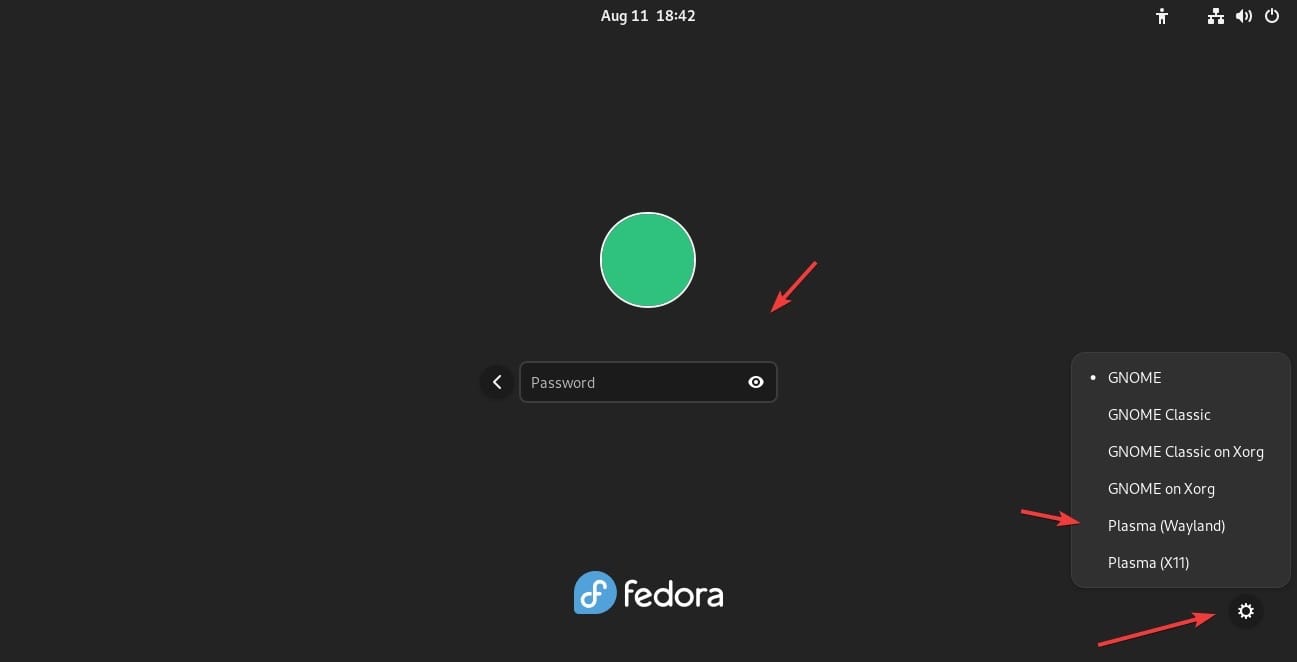How To Install KDE Plasma on Fedora 40

In this tutorial, we will show you how to install KDE Plasma on Fedora 40. Fedora 40, the latest release of the popular Linux distribution, offers users a stable and feature-rich operating system. While Fedora comes with the GNOME desktop environment by default, many users prefer the customizability and flexibility of the KDE Plasma desktop.
KDE Plasma offers several advantages for Fedora 40 users, making it a compelling choice for a desktop environment:
- Customizability: KDE Plasma is renowned for its extensive customization options, allowing you to personalize every aspect of your desktop to suit your needs and preferences.
- User-friendly interface: With its intuitive layout and well-designed widgets, KDE Plasma provides a user-friendly experience for both novice and advanced users.
- Integration with KDE applications: KDE Plasma seamlessly integrates with a wide range of KDE applications, offering a consistent and cohesive user experience across your favorite tools.
- Performance and resource management: KDE Plasma is designed to be lightweight and efficient, ensuring smooth performance even on older hardware or systems with limited resources.
This article assumes you have at least basic knowledge of Linux, know how to use the shell, and most importantly, you host your site on your own VPS. The installation is quite simple and assumes you are running in the root account, if not you may need to add ‘sudo‘ to the commands to get root privileges. I will show you the step-by-step installation of the KDE Plasma desktop environment on Fedora 40.
Prerequisites
Before we dive into the installation process, ensure that you have the following prerequisites in place:
- A server running one of the following operating systems: Fedora 40.
- It’s recommended that you use a fresh OS install to prevent any potential issues.
- You will need access to the terminal to execute commands. Fedora provides the Terminal application for this purpose. It can be found in your Applications menu.
- A stable internet connection to download the necessary packages.
- A non-root sudo user or access to the root user. We recommend acting as a non-root sudo user, however, as you can harm your system if you’re not careful when acting as the root.
Install KDE Plasma on Fedora 40
Step 1. Update the System.
To begin, open the terminal and update your Fedora system to the latest available packages. This step ensures that you have access to the most recent versions of the KDE Plasma components. Run the following command:
sudo dnf clean all sudo dnf update
The package manager will retrieve the latest package information and prompt you to confirm the update. Press “y” and hit Enter to proceed with the update process. Depending on the number of updates available, this step may take a few minutes to complete.
Step 2. Installing KDE Plasma Desktop Environment on Fedora 40.
With your system updated, you can now proceed to install the KDE Plasma desktop environment. Fedora provides a convenient way to install KDE Plasma and its associated packages using a single command:
sudo dnf group install "KDE Plasma Workspaces"
This command installs the core KDE Plasma packages, along with essential applications and dependencies. The installation process may take some time, depending on your internet connection speed and the number of packages required.
Step 3. Setting KDE Plasma as Default Desktop Environment.
After the installation is complete, you need to set KDE Plasma as the default desktop environment. To do this, use the following command to set the graphical target in systemd:
sudo systemctl set-default graphical.target
Next, enable the Simple Desktop Display Manager (SDDM), which is the default display manager for KDE Plasma:
sudo systemctl enable sddm
If you are currently using the GNOME Display Manager (GDM), you should disable it to avoid conflicts:
sudo systemctl disable gdm
Step 4. Rebooting and Logging into KDE Plasma.
To apply the changes and start using KDE Plasma, reboot your Fedora system with the following command:
sudo reboot
Once your system restarts, you will be greeted by the SDDM login screen. Select the “Plasma” session from the menu and enter your login credentials to access the KDE Plasma desktop environment.

Congratulations! You have successfully installed KDE Plasma. Thanks for using this tutorial for installing the KDE Plasma desktop environment on Fedora 40 system. For additional help or useful information, we recommend you check the KDE Plasma website.